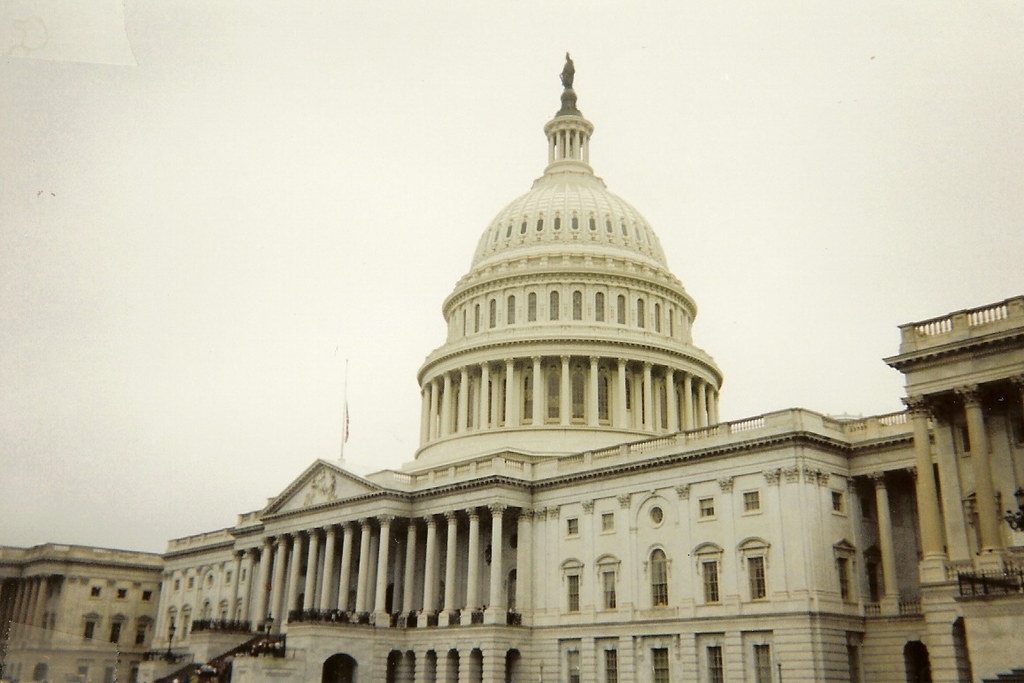An Opportunity for Congress to Improve Transparency of the Executive's International Agreements
The newly introduced bipartisan legislation would constitute the most significant improvement in the transparency of international agreements since the enactment of the Case Act in 1972.

Published by The Lawfare Institute
in Cooperation With

This piece has been cross-posted to Just Security.
Tucked into the proposed bipartisan Strategic Competition Act of 2021, which was voted out of the Senate Foreign Relations Committee today, is a set of amendments that, if enacted, would constitute the most significant improvement in the transparency of international agreements since the enactment of the Case Act in 1972. The amendments, which can be found in Section 310, are consistent with a number of suggestions that we made in a recent law review article to cure major failures in the current transparency regime.
The Failed Transparency Regime for Executive Agreements
In December 2020, we published an article in the Harvard Law Review, “The Failed Transparency Regime for Executive Agreements: An Empirical and Normative Analysis.” In it, we showed that the process for making treaties set forth in Article II of the U.S. Constitution has fallen into disuse. Instead, nearly all U.S. international agreements are made today as “executive agreements”—binding international agreements made by the executive branch without submitting them to the Senate, or to Congress, based either on the president’s sole executive authority or on authority ostensibly granted in advance by Congress through legislation or a prior treaty.
Congress has gone along with that shift but has imposed transparency requirements. We explained:
First, since the late nineteenth century, [Congress] has required the executive branch to publish U.S. international agreements. The precise contours of this obligation have varied over time, but it has never resulted in anything close to complete public disclosure. Second, beginning with the 1972 Case Act, Congress has imposed a reporting requirement with broader reach: the Secretary of State must transmit to Congress, but need not make public, almost every international agreement other than an Article II treaty within sixty days after entry into force.
We conducted an extensive series of interviews and an empirical analysis of over 5,000 cover memos accompanying executive agreements reported to Congress, which we obtained through litigation under the Freedom of Information Act. And we concluded that the existing system isn’t working.
The overall picture that emerged from our analysis was one of dysfunction and nonaccountability. The executive branch’s reporting to Congress has been incomplete; the executive branch publishes only a small fraction of the agreements that it concludes; the legal basis for executive agreements is often unclear and is sometimes dubious; and Congress, we argued, is failing in its oversight role. We wrote:
The dysfunction is the product of decades of neglect, secrecy, disorganization, resource constraints, and misplaced priorities, in both Congress and the executive branch. The current system is not admired by anyone in the government or serving any institution’s interest. Reform is clearly needed, as many of our executive branch and congressional interview subjects themselves acknowledged.
The New Transparency Amendments
This new bill aims to fix the pathologies that we unearthed. Indeed, it includes several of the specific reforms that we recommended.
First, we argued that the executive branch should be required to publish all non-classified executive agreements. The amendment does just this: “Not later than 15 days after the date on which the international agreement enters into force,” the secretary of state “shall make the text of the international agreement … available to the public on the website of the Department of State.”
Second, we argued that “Congress should act to redress the executive branch’s practice of including irrelevant or barely relevant authorities in a ‘kitchen sink’ fashion along with more relevant authorities.” We proposed that for each agreement, the executive branch should be required to do one of two things: When Article II alone is being relied upon, the agreement should be labeled a “sole executive agreement” and only Article II should be cited. For all other agreements, we argued that “Congress should require the executive branch to list one statute or treaty on which it primarily relies.” Again, the proposed legislation does just this: It requires that when the agreement is published on the State Department website, it must be accompanied by a written notice that contains
a description of the primary legal authority that, in the view of the Secretary, provides authorization for the negotiation, conclusion, or negotiation and conclusion of the international agreement or qualifying non-binding instrument. If multiple authorities are relied upon, the Secretary may cite all such authorities but shall identify a primary authority.
Third, we argued that, because “there is such a long history of noncompliance with reporting and publication requirements for executive agreements,”
Congress should specify that no funds are available to implement any agreement until it is transmitted — first to the Department of State and, then, through the Department of State to Congress. If Congress adopts the comprehensive publication recommendations we propose, and thus eliminates the separate requirement of transmittal to Congress, then Congress should make funding for implementation of every nonclassified agreement conditional on its publication.
Again, the proposed legislation does just this. It provides that “no amounts appropriated to the Department of State under any law shall be available for obligation or expenditure to conclude or implement or to support the conclusion or implementation of . . . any international agreement . . . until the Secretary satisfies the substantive requirements” outlined above.
Fourth, we recommended that Congress should provide the State Department with additional resources to enable it to carry out these additional obligations. Again, the legislation does this: It provides $1 million a year for five years to the State Department to assist it in carrying out the new obligations. We have no particular view about whether this is enough money, but providing specific resources makes it more likely that the State Department will be able to comply with the new requirements. Presumably the amount could be increased if it proves inadequate.
Last, the draft bill includes and goes beyond a recommendation that we made regarding nonbinding agreements by the executive branch, which are currently exempt from the reporting and publication requirements. In our article, we argued that there was a danger that strengthening transparency requirements for executive agreements could drive the executive to even greater reliance on nonbinding arrangements. We suggested some possibilities for addressing this concern. The draft legislation goes beyond our recommendations by applying all of the aforementioned requirements not only to binding international agreements but also to “qualifying nonbinding instruments.” These include any nonbinding instrument that is “signed or otherwise concluded with one or more foreign governments or international organizations,” and “has an important effect on the foreign policy of the United States,” or “is the subject of a written communication from the Chair or Ranking member of either of the appropriate congressional committees to the Secretary.”
We note that, for nonbinding agreements, the bill leaves a great deal to be worked out in State Department regulations, including what constitutes an “important effect on the foreign policy of the United States.” There is also the question of how to ensure compliance, given that as many as perhaps fifty agencies conclude what might be considered qualifying nonbinding instruments. Nonetheless, we applaud the effort to anticipate and head off what we earlier warned could be a “shift toward even less transparent nonbinding political agreements.”
The bill goes beyond our recommendations in another, more significant respect. It requires that the executive branch notify relevant congressional committees within five business days after the State Department approves the negotiation or conclusion of an agreement, and that the department provide the committees with various types of information about the proposed agreement—including information about the “scope, substance, form, and parties,” as well as the legal authority that the executive is relying on to negotiate and conclude the agreement. In our article, we argued only for ex post transparency requirements that would apply after an agreement was concluded, noting that ex ante requirements might impose additional costs on executive flexibility and that they might not be appropriate across the board. We also noted, however, that ex ante requirements “are entirely legitimate mechanisms of transparency and increased accountability to Congress.” Moreover, ex ante reporting to congressional committees will presumably have less of an impact on executive flexibility than would a regime of ex ante publication of proposed agreements or the notice-and-comment process that applies to domestic federal regulations.
Conclusion
It is still too early to know whether these ambitious transparency provisions will all make it into law. But Congress’s willingness to consider meaningful reform is an important development. During the nearly 50-year history of the Case Act, Congress has amended the statute a number of times to address failures in the transparency regime for executive agreements, but these efforts have always been too modest to make much of a difference. The more ambitious approach reflected in this proposed legislation is long overdue.






